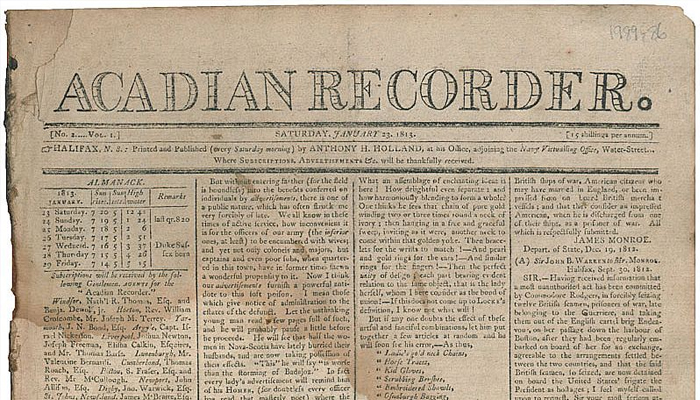Nova Scotia Historical Newspapers
For most of us, a newspaper’s value lasts only as long as the time it takes to read it and discard it. At the Nova Scotia Archives in Halifax, however, the very opposite holds true.
For a researcher, community historian or genealogist, newspapers are an invaluable resource about our families, our communities, our country and the world at large. Every article, every letter to the editor and every advertisement contains insights about who we are and how we live. Newspapers are a reflection of our society and their value increases with every day, month and year that passes after their publication.
Historical newspapers are gold mines of information about the past, but preserving them can be a challenge. Too much handling can cause their ink to wear, while the inexpensive paper they’re printed on can be incredibly fragile, disintegrating at a touch. In order to both protect these papers and provide unlimited public access, the Nova Scotia Archives has made it their mission to digitize and host notable collections of the province’s historical newspapers online.
Currently, the Archives’ website offers access to thirteen historical newspapers published in six different Nova Scotian communities over a span of 210 years—26,220 digitized pages in all.
A highlight of this online resource is the first four decades of the Acadian Recorder. Now considered one of Nova Scotia’s most significant early newspapers, the Recorder was first published in January 1813. A weekly, English-language publication, it had a reputation for providing readers with high quality articles about local, national and international events, including early coverage of the War of 1812 and its impact on the province.
Other standouts in the online collection are the surviving issues from four early 20th-century Gaelic newspapers published in Sydney, Cape Breton. Presented in partnership with the Beaton Institute, Cape Breton University, and Nova Scotia's Office of Gaelic Affairs, the newspapers demonstrate the interest eastern Nova Scotia’s Gaelic-speakers and readers had in literature that embodied their language and traditions.


